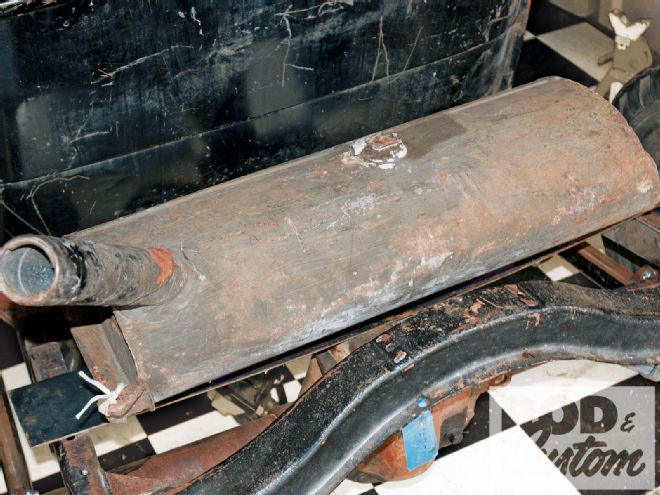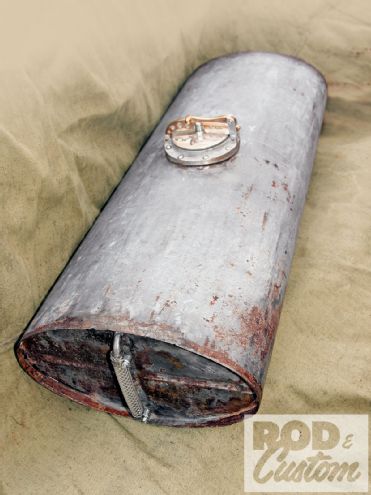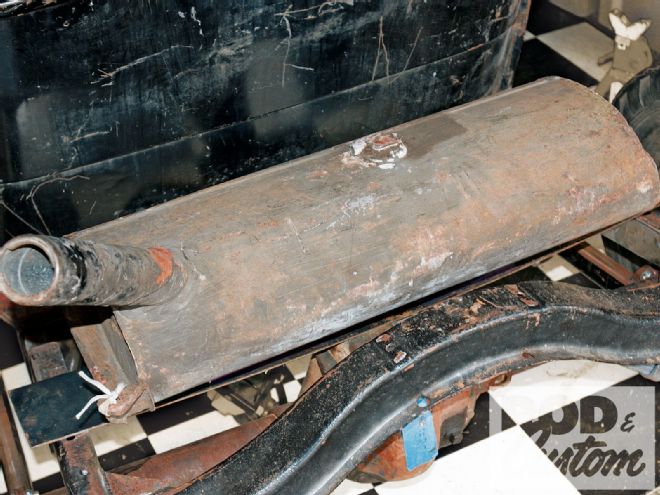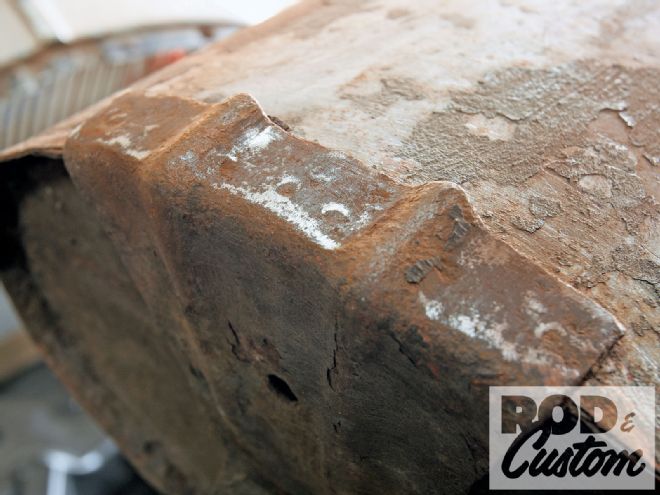
It's strange how things pan out sometimes. While I've been sporadically working on the gas tank over the past few weeks, which you're about to read about, it was never intended to appear in the same issue as the fuel system in my project '49 Chevy, which you'll read about elsewhere in this issue. The two fuel-related stories effectively bookend carbureted fuel system technology, from a high-tech, pump-in-tank system equipped with a return line to a basic tank/filter/mechanical pump system. In fact, the only way this system could be more basic would be if it were a gravity feed system with no pump!

While working on the gas tank before finishing the rolling chassis may seem a little odd, it was a small job I could work on at my bench in my garage whenever I had a few spare minutes, and it's all got to be done at some point, right? I bought the tank, an oval-shaped item that was original equipment on an English Ford Anglia, at a swap meet some 15 years ago, though I had no particular use for it at the time.
 <strong>1</strong> Here's what I started with: a Ford Anglia gas tank that I bought some 15 years ago for a "future project". That project finally presented itself, so the tank was pulled from the shelf of old rusty stuff.
<strong>1</strong> Here's what I started with: a Ford Anglia gas tank that I bought some 15 years ago for a "future project". That project finally presented itself, so the tank was pulled from the shelf of old rusty stuff.
I figured it'd fit perfectly on the back of the Modified I'm building though, and once the original mounting brackets were removed, the filler neck and drain plugs cut out and the subsequent holes welded shut, it began to look pretty good. Flipping it over to hide the heavy seam that ran its full width improved things, and with a sight gauge fitted to one end, and a neat vintage-looking flip fuel cap from Crafty-B mounted in its center, the grungy old tank was looking pretty cool. But I wanted to seal the inside to ensure trouble-free use without flaky rust and debris blocking the fuel lines.
The Eastwood Company is known for all manner of restoration materials and products, and their gas tank sealer looked perfect for my home-brewed budget tank resto project. While the required muriatic acid, acetone, and chemically resistant gloves aren't included (and couldn't be anyway or it couldn't be shipped), everything needed to flush, treat, and seal a gas tank up to 20 gallons capacity was delivered to my door. With a Sunday afternoon set aside for the job, which has to be completed in one session, I now have a leak-proof, old-style tank and the Modified is one step closer to completion.
 <strong>2</strong> The original tank mounts had to come off, which meant drilling out the spot welds. Lightly grinding the surface revealed where they were.
<strong>2</strong> The original tank mounts had to come off, which meant drilling out the spot welds. Lightly grinding the surface revealed where they were.
A Word of Warning ... Never weld, grind, or cut a gas tank that has recently had gas in it. They can and do explode, even if they've been drained for a while. Find a specialist gas tank or radiator shop to perform the work for you or at the very least get them to thoroughly flush it so it's safe to weld on. This tank had been in my possession for so long that I was absolutely sure it had been empty for 15 years, so I felt confident in working on it. If I'd bought it recently, I'd be sourcing a specialist to perform the work.